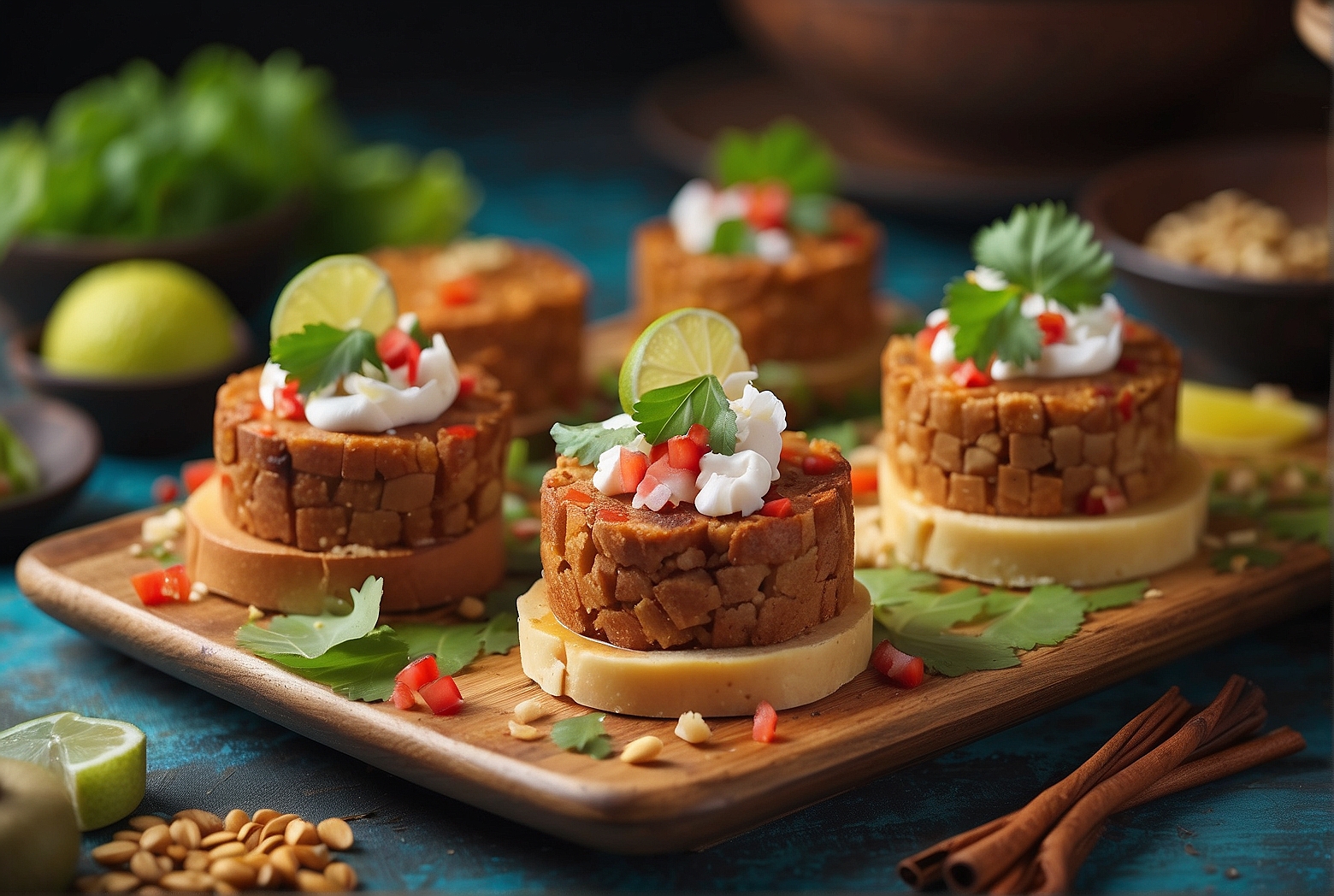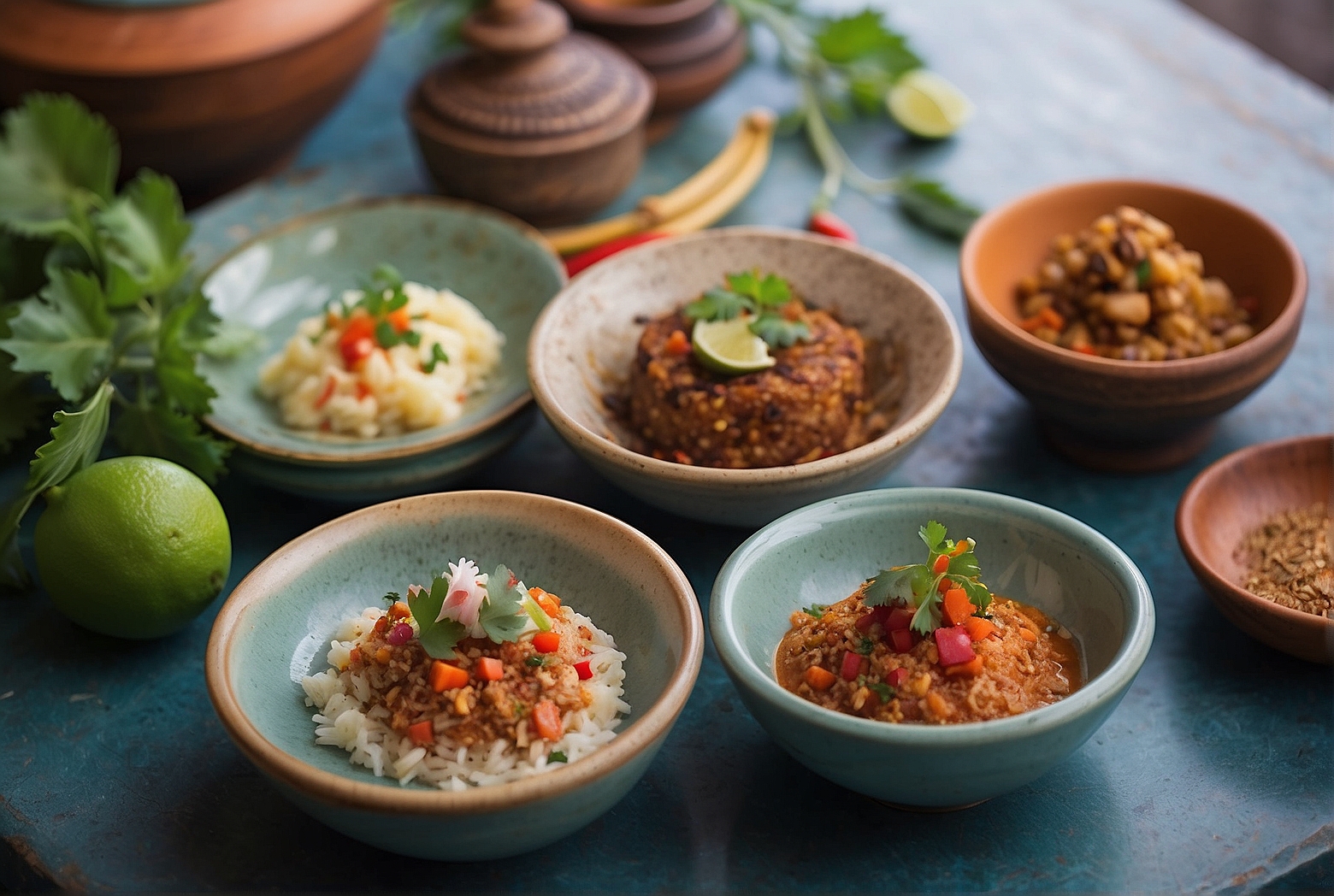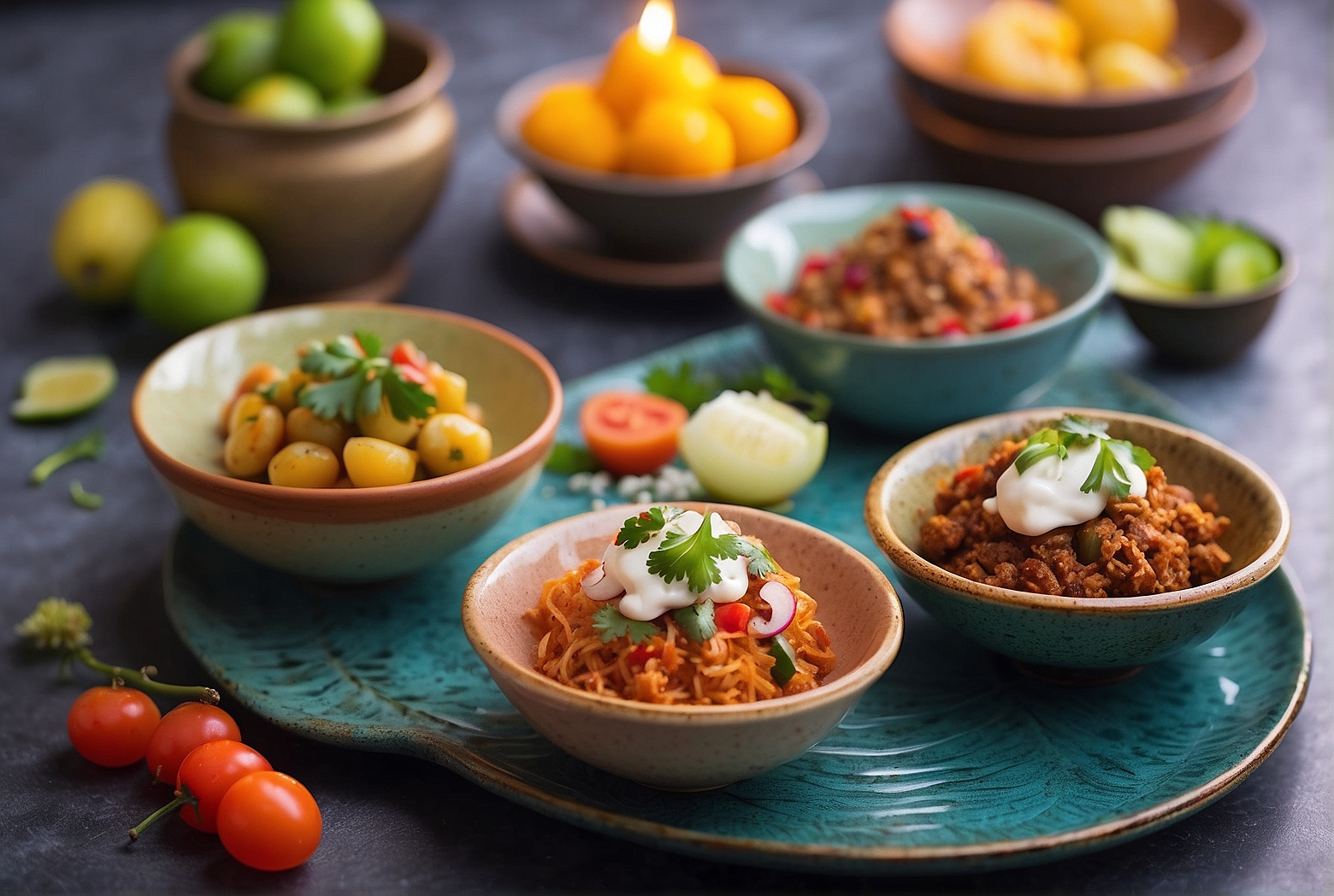Imagine yourself transported to the vibrant streets of Brazil, where the air is filled with tantalizing aromas and the sound of sizzling pans. In this culinary adventure, we will explore the mouthwatering world of Acarajé, a beloved Brazilian dish that is bound to leave you craving for more. Bursting with unique flavors and textures, we will uncover the various delicious ways you can savor this delightful treat. Whether you’re a seasoned chef or a novice in the kitchen, get ready to embark on a gastronomic journey as we delve into the art of cooking Acarajé. So grab your apron, prepare your taste buds, and let’s dive into the world of Brazilian cuisine together!
Traditional Acarajé Recipe
Acarajé is a traditional Brazilian dish that originated in the northeastern state of Bahia. It is a delicious deep-fried ball made from black-eyed pea dough and filled with various flavorful ingredients. This article will guide you through the process of making traditional acarajé, as well as provide variations, serving suggestions, and even healthier alternatives.
Ingredients
To make traditional acarajé, you will need the following ingredients:
- 2 cups of dried black-eyed peas
- 1 small onion, finely chopped
- 2 cloves of garlic, minced
- Salt to taste
- Vegetable oil for frying
Instructions
- Soak the black-eyed peas in water overnight or for at least 8 hours. Drain well.
- In a food processor, grind the soaked black-eyed peas until you get a fine, smooth dough.
- Transfer the dough to a large bowl and add the chopped onion, minced garlic, and salt. Mix well until all the ingredients are evenly incorporated.
- Shape the dough into small balls, about the size of a golf ball.
- Heat vegetable oil in a deep fryer or large pot over medium heat.
- Carefully drop the acarajé balls into the hot oil and fry until they turn golden brown and crispy. This usually takes about 5-7 minutes.
- Using a slotted spoon, remove the fried acarajé from the oil and transfer them to a paper towel-lined plate to drain any excess oil.
- Serve the acarajé while they are still warm and crispy.
Variations and Add-ons
While traditional acarajé is already a flavorful treat on its own, there are several delicious variations and add-ons that you can try to enhance your culinary experience.
Shrimp-filled Acarajé
One popular variation of acarajé is the shrimp-filled version. To make this, simply slice each acarajé in half and fill it with cooked shrimp seasoned with a blend of spices such as paprika, cumin, and chili powder. This adds a burst of seafood flavor to the already delicious snack.
Codfish Acarajé
If you’re a fan of codfish, you can try making codfish acarajé. Similar to the shrimp-filled version, cut the acarajé in half and stuff it with cooked and seasoned codfish. The saltiness of the codfish complements the savory flavors of the acarajé dough.

Cheese-filled Acarajé
For cheese lovers, filling the acarajé with gooey melted cheese is a must-try variation. Cut the acarajé in half and stuff it with your favorite cheese, such as mozzarella or cheddar. As you take a bite, the warm, melted cheese oozes out, making every mouthful incredibly satisfying.
Vegetarian Acarajé
If you prefer a vegetarian option, you can simply omit the fillings altogether and enjoy the acarajé on its own. The dough itself is packed with flavor, and the crispy texture will still provide a delightful experience.
Acarajé Toppings and Sides
Acarajé can be further enhanced with various toppings and sides, adding even more flavor and texture to this Brazilian delicacy.
Vatapá
One of the most common accompaniments to acarajé is vatapá, a creamy and flavorful sauce made from shrimp, bread crumbs, coconut milk, palm oil, and various spices. Vatapá is typically spread onto the split acarajé before adding any fillings, adding a delightful creaminess to the dish.
Caruru
Caruru is another delicious side dish that pairs perfectly with acarajé. It is a flavorful okra stew made with onions, garlic, peanuts, palm oil, and dried shrimp. The combination of the tender okra and rich peanut flavors creates a unique and satisfying complement to the acarajé.
Sliced Onions
Adding thinly sliced onions to your acarajé provides a nice crunch and a hint of sharpness to balance out the other flavors. They can be sprinkled on top of the acarajé or placed inside the filling for an extra kick.

Hot Pepper Sauce
If you enjoy a bit of heat, don’t forget to include some hot pepper sauce as a topping. Authentic Brazilian hot pepper sauce, known as pimenta, is made from malagueta peppers, vinegar, onions, and spices. It adds a spicy punch that takes the acarajé to the next level.
Serving Suggestions
Acarajé is a versatile dish that can be enjoyed in various ways, depending on your preference and occasion.
Accompany with a Cold Beverage
To quench your thirst and complement the flavors of the acarajé, it is common to serve it with a cold beverage. Traditional options include fresh coconut water or a refreshing fruit juice such as cashew fruit juice, which is popular in Brazil. The cool and fruity drink will provide a refreshing contrast to the warmth and complexity of the acarajé.
Serve as an Appetizer or Main Dish
Acarajé can be served as an appetizer, allowing your guests to enjoy its unique flavors before moving on to the main course. However, with its rich and satisfying ingredients, acarajé can also be enjoyed as a main dish. Simply serve a few acarajé with various fillings, toppings, and sides, and let your guests create their own personalized experience.
Enjoy as Street Food
One of the best ways to experience acarajé is by enjoying it as street food, just like the locals do in Brazil. In many cities throughout the country, you can find street vendors selling freshly fried acarajé, ready to be devoured on the go. The combination of the vibrant street atmosphere and the warm, crispy acarajé creates an utterly enjoyable experience.
Acarajé and Brazilian Culture
Acarajé holds a special place in Brazilian culture, and its history and symbolism are deeply intertwined with the country’s traditions and heritage.
Historical Background
Acarajé originated from the culinary traditions of the Afro-Brazilian community in Bahia. It is believed to have been brought to Brazil by the West African slaves during the colonial period. The dish has since evolved and become an iconic part of Brazilian cuisine, especially in Bahia, where it is considered a cultural and gastronomic symbol.
Symbolism and Significance
Aside from its culinary significance, acarajé also carries cultural and religious symbolism. In Bahia, it is closely associated with the rituals of the Afro-Brazilian religion known as Candomblé. During religious ceremonies, acarajé is offered to the deities as an act of devotion and gratitude. This strong connection between acarajé and spirituality adds an extra layer of depth to the dish.
Traditional Street Vendors
Acarajé is often sold by street vendors in Bahia, who are known as “baianas de acarajé.” These vendors, usually women dressed in traditional Afro-Brazilian attire, prepare and sell acarajé on the streets of Bahia. They play an important role in preserving the culinary traditions and cultural heritage associated with acarajé, and their presence adds to the vibrant street culture of the region.
Healthier Acarajé Alternatives
If you’re looking for healthier alternatives to the traditional deep-fried acarajé, there are a few options that you can explore.
Baked Acarajé
Instead of deep frying the acarajé dough, you can opt to bake it in the oven. Simply shape the dough into balls and place them on a baking sheet lined with parchment paper. Bake at 375°F (190°C) for about 20-25 minutes or until they turn golden brown. While the texture may differ from the traditional version, baked acarajé still offers a delicious and healthier option.
Gluten-free Acarajé
For those on a gluten-free diet, you can substitute the regular black-eyed pea flour with gluten-free alternatives such as chickpea flour or cassava flour. These flours provide a similar texture and flavor to the acarajé dough, ensuring that everyone can indulge in this delightful Brazilian treat.
Baked Vegetarian Acarajé
To make a healthier vegetarian version of acarajé, you can combine the baked acarajé method with the vegetarian option. Simply omit the fillings and enjoy the baked acarajé on its own or with your preferred toppings and sides. This creates a light yet satisfying alternative that is suitable for vegetarians.
International Delights Inspired by Acarajé
The unique flavors and textures of acarajé have inspired various international dishes, showcasing its versatility and influence in culinary exploration.
Acarajé-inspired Falafel
Drawing inspiration from the deep-fried ball shape of acarajé, you can create a Middle Eastern-inspired falafel with a Brazilian twist. Instead of using chickpeas, use black-eyed peas to make the falafel dough, seasoned with spices such as cumin, coriander, and garlic. Serve it in pita bread with tahini sauce and a variety of fresh vegetables for a fusion of flavors.
Acarajé-inspired Empanadas
Empanadas are popular in many Latin American countries, and you can give them a Brazilian twist by using acarajé dough as the pastry. Fill the empanadas with your choice of filling, such as ground beef, cheese, or vegetables. The combination of the crispy acarajé pastry and the flavorful fillings creates a delightful mashup of culinary traditions.
Fusion Cuisine with Acarajé
Acarajé is not limited to traditional forms and can be incorporated into fusion cuisine, creating exciting and unique combinations.
Acarajé Burger
Take the concept of a burger to a whole new level by using acarajé patties instead of traditional burger buns. Sandwich a juicy beef patty or a vegetarian burger between two crispy acarajé patties and add your favorite toppings, such as lettuce, tomato, cheese, and sauce. The result is a burger with a distinct Brazilian twist that is sure to impress.
Acarajé Pizza
For pizza lovers, consider making an acarajé-inspired pizza by using the acarajé dough as the pizza base. Top it with tomato sauce, cheese, and your favorite toppings, such as bell peppers, onions, and olives. Bake until the crust is golden and crispy, and enjoy a fusion of Brazilian and Italian flavors in every bite.
Acarajé: A Social Experience
In addition to the culinary delights, making and sharing acarajé can be a social experience that brings people together.
Preparing and Sharing Acarajé with Friends and Family
Gather your loved ones to join you in making acarajé. From soaking and grinding the black-eyed peas to shaping the dough and frying the acarajé, the process can be a fun and interactive experience. Share stories, laughter, and create cherished memories while enjoying the process of making this beloved Brazilian dish together.
Acarajé Festivals and Events
For an immersive experience, consider attending a local acarajé festival or food event. These events often feature a wide variety of acarajé vendors, each offering their own unique twists and flavors. You can sample different fillings, toppings, and side dishes, and truly immerse yourself in the rich culture and gastronomy of Brazil.
In conclusion, acarajé is not just a delicious snack; it is a rich culinary tradition that embodies the flavors, history, and spirit of Brazil. Whether you choose to make the traditional recipe, explore variations and healthier alternatives, or venture into fusion cuisine, acarajé is a culinary adventure that is sure to delight your taste buds and deepen your appreciation for Brazilian cuisine and culture. So gather your ingredients, put on your apron, and let the aromatic flavors of acarajé transport you to the vibrant streets of Brazil. Enjoy!
